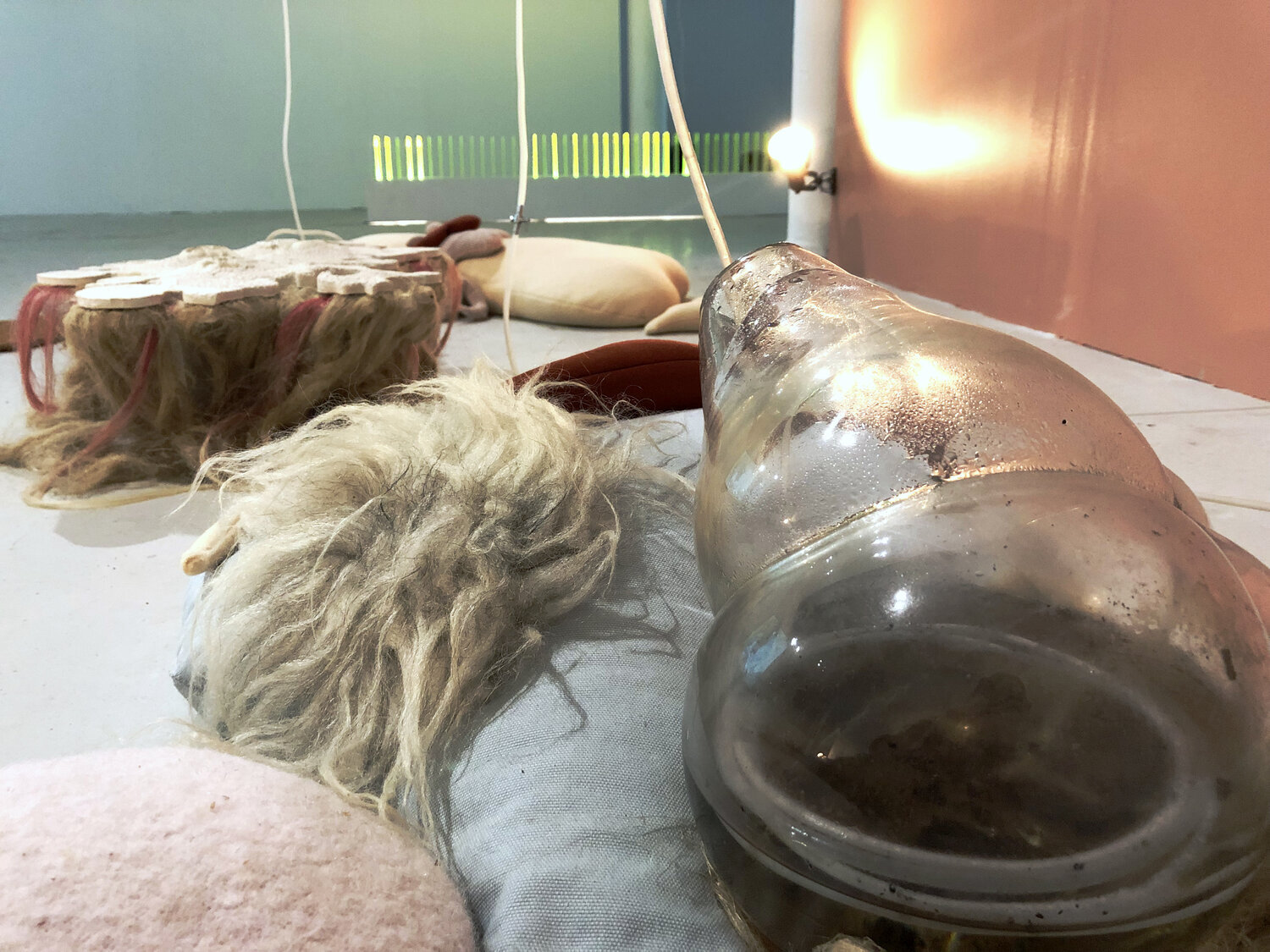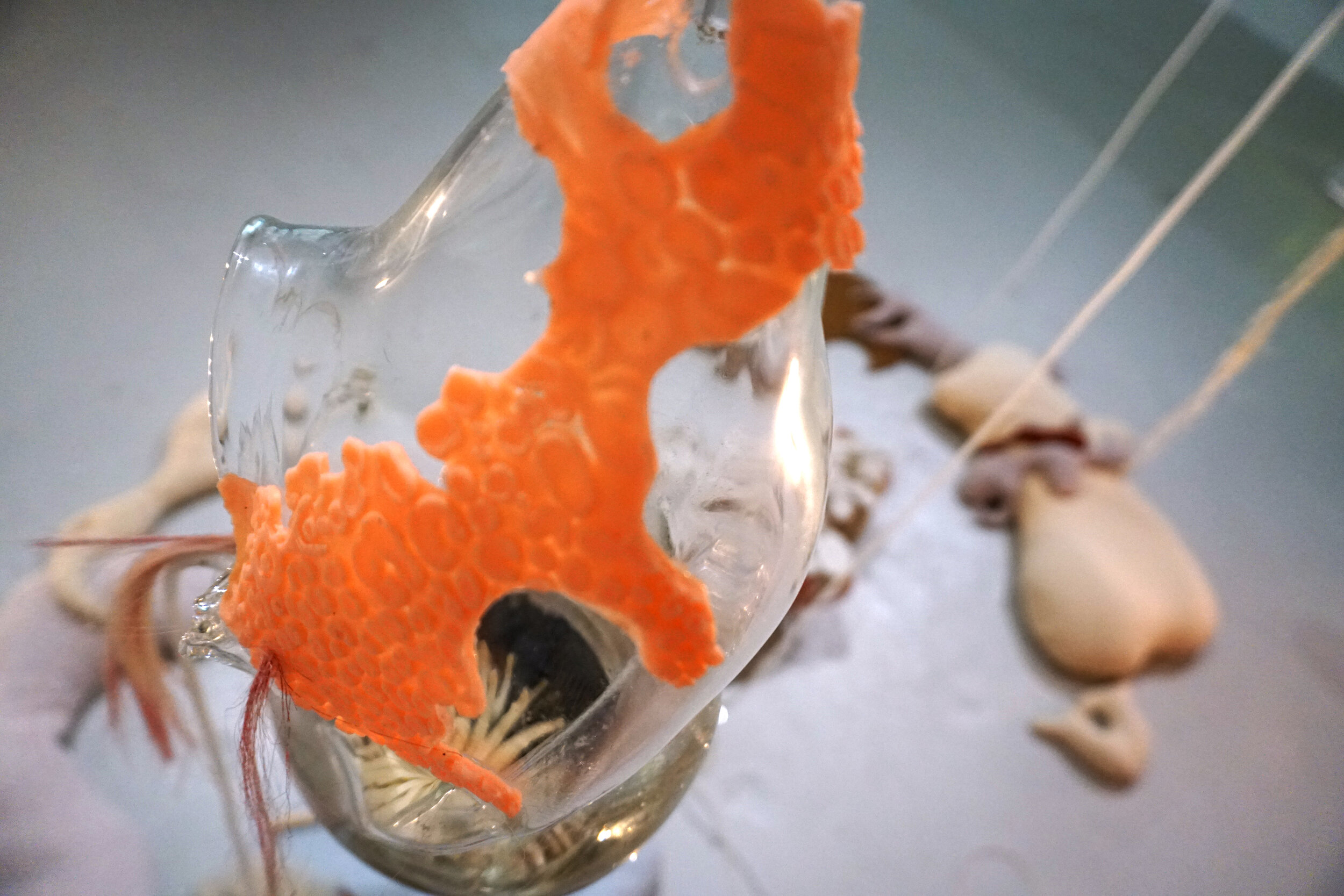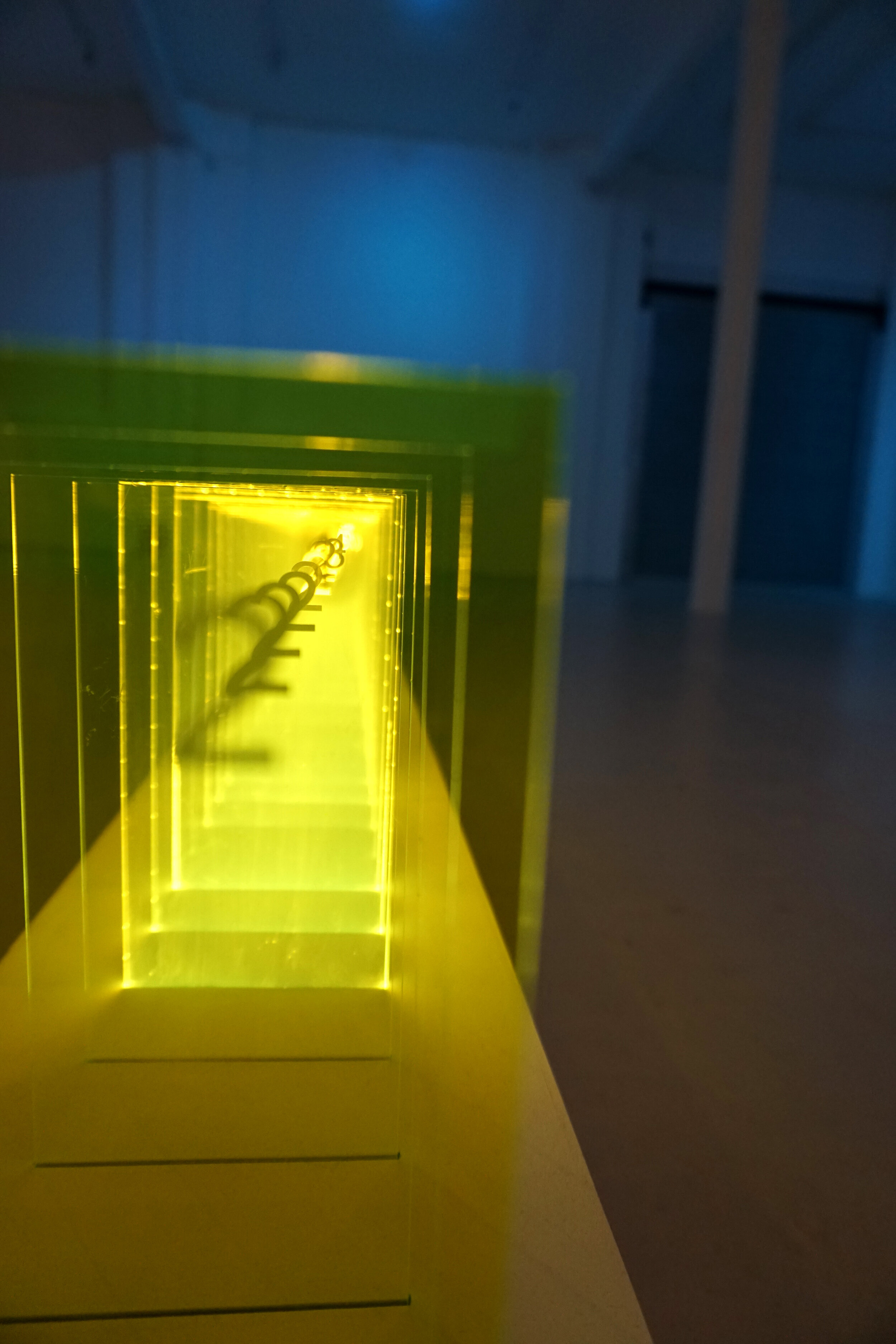Hyperobjects
7 November - 5 December 2019
Art Research Matters | Baum & Leahy | Jez riley French | Joey O’Gorman | Jasmin Märker | Matmos | Robin Price | Saša Spačal | Mark Peter Wright
Curated by Edy Fung
Sticky goosebumps, warped ripples but not there… Catalyst Arts presents the last exhibition programme of 2019, Hyperobjects. Inspired by Timothy Morton’s theories on object-oriented ontology, Hyperobjects explores entities between phenomena and things which are not fully accessible through anthropocentric viewpoints.
Featuring Art Research Matters (NI), Baum & Leahy (UK-DE), Jez riley French (UK), Joey O’Gorman (NI), Jasmin Märker (NI-DE), Matmos (US), Robin Price (NI), Saša Spačal (SI) and Mark Peter Wright (UK), the exhibition features interdisciplinary works ranging from live sculpture, installation, video, text and sound art, rethinking our ecological relationships with the planet, beyond current wavelengths and spacetime.
Exhibition Opening
7/11/19, 6-9pm
With Sonic Performance ‘‘island | fjórar (dissolve)’ by Jez riley French, 7:30pm
Offsite Programme
Reading Session - Discussion on Timothy Morton’s Hyperobject, Subscendence and related subjects
21/11/19, 7pm
with Art Research Matters (Ulster Research Salon)
at Platform Arts, Belfast
Closing Night
5/12/19, 6-9pm
Audio Session, 7pm
‘Artificial Natures’ by Mark Peter Wright
‘2311’ by Saša Spačal
Video Documentation Screening - Exhibition viewed through robot’s eyes
Styrofoam is Timothy Morton’s first example of hyperobject, for its vast, viscous and indigestible existence stretches beyond the human lifetime. In How to Turn Your Plastic into Audio Gold, Matmos demonstrates how they acquire the sonic properties of various plastic objects, which are sampled and used to create their latest album "Plastic Anniversary". At once hyper-familiar in its omnipresence and deeply inhuman in its measured-in-centuries longevity and endurance, plastic supplies, surrounds and scares. Seemingly negligible, plastic is always ready to hand but also always somewhat suspect, casting toxic shadows onto the everyday. True to form, the band have assembled a promiscuous array of examples of this sturdy-yet-ersatz family of materials: Bakelite dominos, Styrofoam coolers, polyethylene waste containers, PVC panpipes, pinpricks of bubble wrap, silicone gel breast implants and synthetic human fat.
Go and Live in the Middle of Nowhere Obviously is a multimedia installation exploring Electromagnetic Hypersensitivity (EHS), a condition that affects many humans and is claimed to be a consequence hidden behind our technological infrastructures - electronic devices, televisions and WIFI. Using EM microphones to reveal and amplify screen showing messages open-sourced from EHS sufferers, Mark Peter Wright is interested in drawing attention to the inaudible and invisible effects anthropogenic activities and the palimpsest of relations found within the margins of bodies, health and hearing.
There is a foreseeable future where our increasingly sanitised domestic spaces can result in a ‘silent microbiome crisis’, in which the loss of diverse microbial communities puts our overall health at risk. Baum & Leahy’s Host is a speculative near-future domestic scenario for a case of the ‘Microbiocene’. The installation envisions a hybrid, rewilded space nurturing the biodiversity within which the mammalian immune system evolved, whilst also suggesting how we might learn to live consciously with the multi-faceted, unpredictable ways of the microbes. Beginning with personal and collective healing, in our bodies and homes, the pair seeds the emergence of environmental healing on a planetary scale.
Saša Spačal’s work centres on viewing the human body as one with the environment, intra-acting (Barad) and dissolving into multiplicity that awaits its new becoming. She continues to look at the human’s intimate bond with planet and asks - what if this relationship becomes technologically mediated?
Intra_flux is a flow of intra-actions in biogeochemical feedback loops perpetuating across scales. Circulating through the lithosphere, atmosphere, hydrosphere and biosphere, matter's planetary unfoldings and thickenings always coexist and co-emerge in the network of relations. Human as entangled and dynamic, always nomadic, transient and temporary stabilisation of life makes cuts in the flow.
Hyperobjects are nonlocal, molten and phased, manifesting everywhere in different ways. Morton argues that the total sum of entropy in the universe is a hyperobject; the certain slow increase in entropy, as dictated by the second law of thermodynamics, is postulated by physicists to be the reason why we perceive time linearly and moving in one direction, time’s arrow.
By extension, Robin Price’s The Total Sum of Seconds Since Midnight January 1st 1970 is also a hyperobject. This date, picked by early programmers as the epoch by which to measure “computer time” is the so called UNIX epoch. The epoch is recorded in modern computers as 64 binary digits or bits, either on or off. The 32 bit epoch will run out at 3:14 am and 8 seconds on Tuesday the 19th of January 2038. The 64 bit epoch will overflow 293 billion years in the future, over twenty times the age of the known universe.
In the work Peculiar Projections of the Demiurge shows Joey O’Gorman’s Lorenz attractor. As an emblematic model of chaotic attraction, the Lorenz attractor demonstrates that it is possible to have deterministic behaviour which is essentially unpredictable. Minute differences in initial conditions lead to rapidly divergent paths within these systems, which occur in a range of different phenomena, from atmospheric convections, chemical reactions to electric circuits. These ‘strange attractors’ are akin to hyperobjects insofar as they: could only be immediately apprehended by a higher dimensional being; appear at the confluence of different objects; are revealed when the objects we witness glom on to them; and are disconnected over vast stretches of time and space.
Reflecting on human ideas of continuous economic growth and time as perpetually increasing complexity, Jasmin Märker examines the commonalities between non-human ecological communities and contemporary urban dynamics. Slime Dynamics II, derived from Ben Woodard’s book of the same title, is founded on the recognition that slime is the substance - rather than a trace - of life. The installation consists of a series of tiles, plaster and other materials, which function as nutrients for the organisms that inhabit them and have been exposed to different environmental conditions to give rise to a ‘living map’ of various non-human interactions.
‘Island | fjórar (dissolve)’ is Jez riley French’s sound installation in four channels. Using his own handbuilt contact microphones, hydrophones and geophones, he reveals sounds of the other worlds in the environment that are not immediately available from human hearing. The sound of the world turning; ancient air escaping from glaciers; sound of minerals, ceramics and civil structures dissolved through the actions of acid rain, neglect and performative techniques. The remnants displayed are from his live performance in Catalyst Arts, where micro worlds of sound, trapped for thousands of years, released through pockets of air and gas. Amplified through machine listening, Jez’s recordings reflect perspectives outside the human awareness of non-living entities and ecologies, revealing the interobjective aspects and traces of climate change.
Catalyst Arts is supported by Arts Council Northern Ireland. Special thanks to CCA Derry~Londonderry, Art Research Matters and Platform Arts for their in-kind support.


































